A taste of Filipino Culture and History in Five Dishes
Traditional cuisine is a window into the culture, history, and character of a country and its people. Take Filipino food for example. The medley of Spanish, American, and Asian flavors tells of the Philippines’ colonial history and its cultural interactions with its Asian neighbors. The manner by which food is served speaks of the Filipino culture of friendliness and hospitality.
There is one restaurant in Brussels that offers a taste of Philippine culture, history, and culinary traditions. At Bahay Kubo along Chaussée de Wavre, the dining experience begins with a warm welcome and a smile. Not at all like the formal and customary Bonjour but a genuine smile that stretches from ear to ear. Filipinos are cheerful and hospitable by nature because they believe that making others feel at home is an important act of kindness and compassion. And it all begins with a warm welcome and a smile.
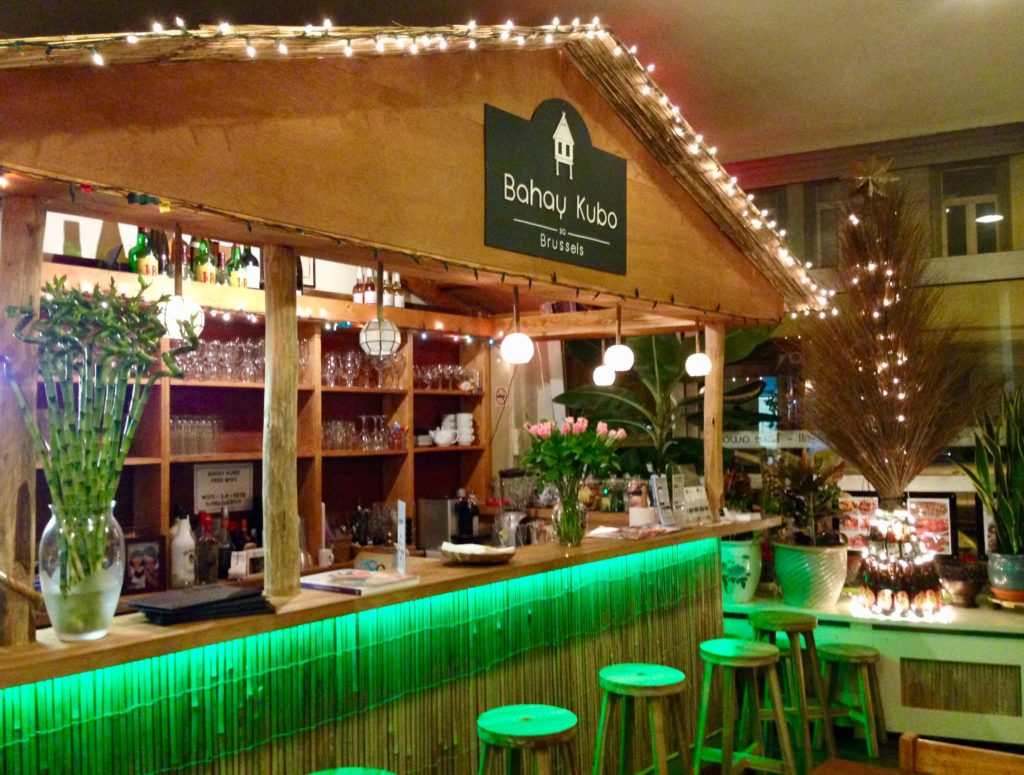
The restaurant bar gives you an idea of what bahay kubo means or what it looks like, a house made of bamboo and palm leaves reminiscent of the original dwelling places of the indigenous people of the Philippines. In the evening, the bar radiates with Christmas lights accompanied by the glow of a Christmas tree made of traditional Filipino broomsticks. That’s because it’s never too early to celebrate Christmas in the Philippines. The country is known for having one of the longest holiday seasons in the world, starting in September and ending in January. In many
Filipino households, the halls are decked with merry yuletide decors all year round.
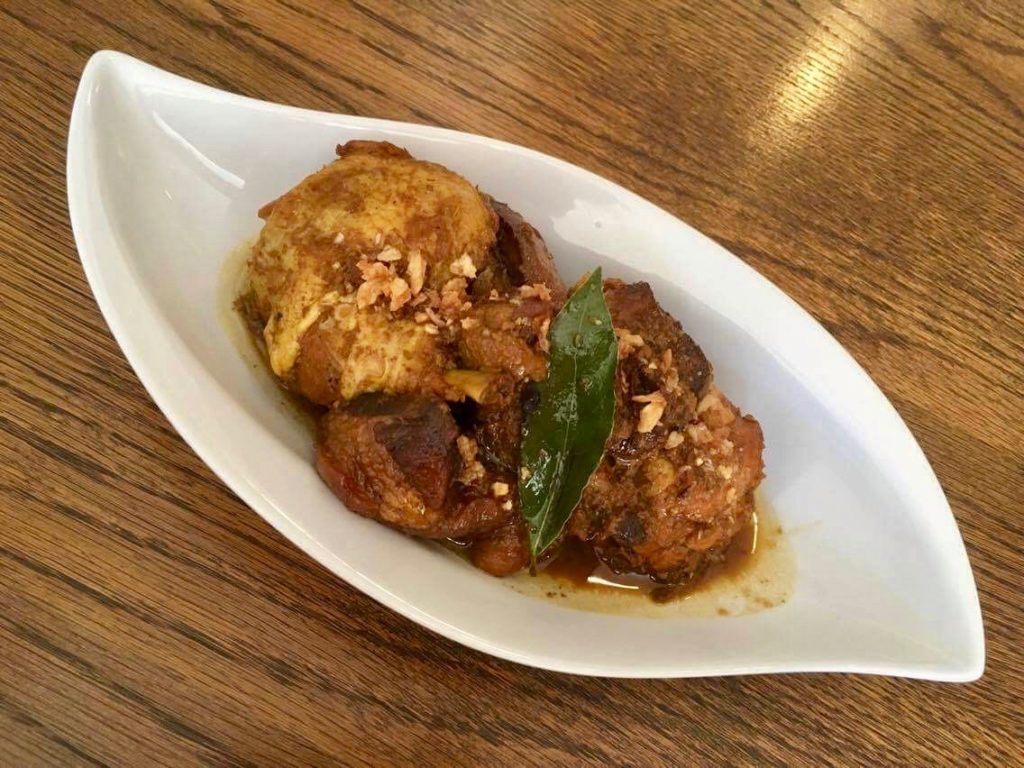
And now we get to the most exciting part: the food. Let’s start with one of Bahay Kubo’s bestsellers, the Pork and Chicken Adobo or meat marinated in vinegar, soy sauce, garlic, and black peppercorns with a finishing touch of bay leaves. What you get is a melange of sour, salty, spicy, and earthy. Adobo is the national dish of the Philippines. The marinating technique comes from the Spaniards, but the practice of combining different kinds of meat in one dish is a Filipino trademark.
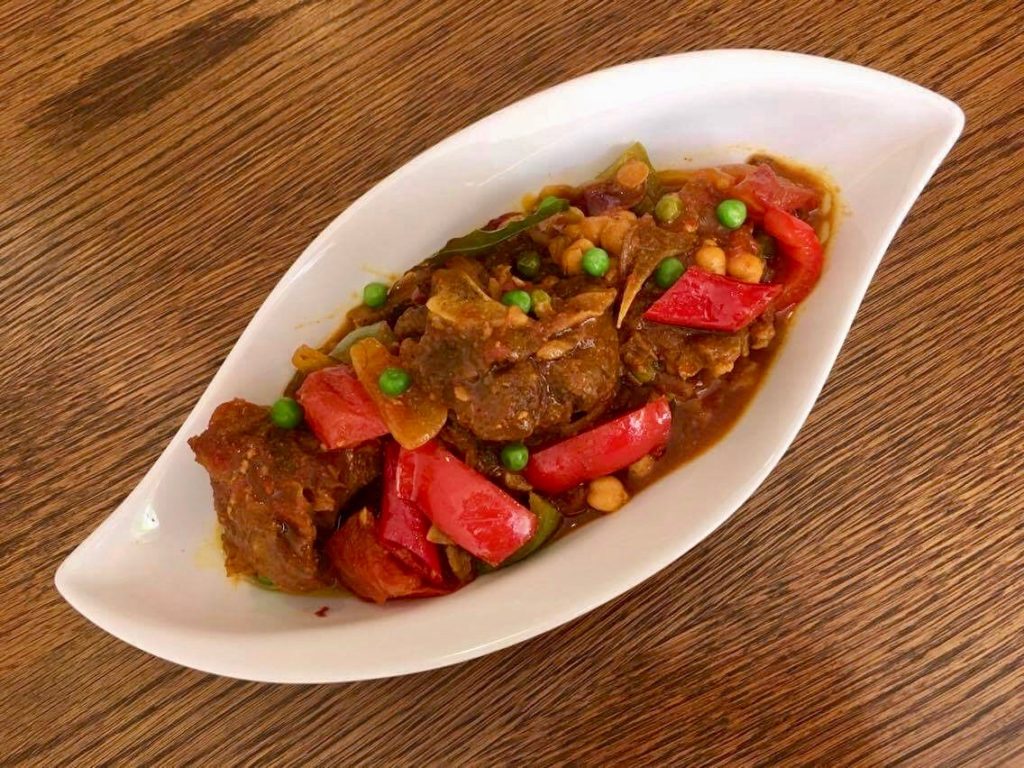
Next on the list is Kalderetang Kambing or goat meat stewed in tomato sauce. At Bahay Kubo, the meat is cooked on the bone to intensify the flavors and texture that reach your palate. Kaldereta which means cauldron in Spanish shares similarities with meat stews from the Iberian peninsula.
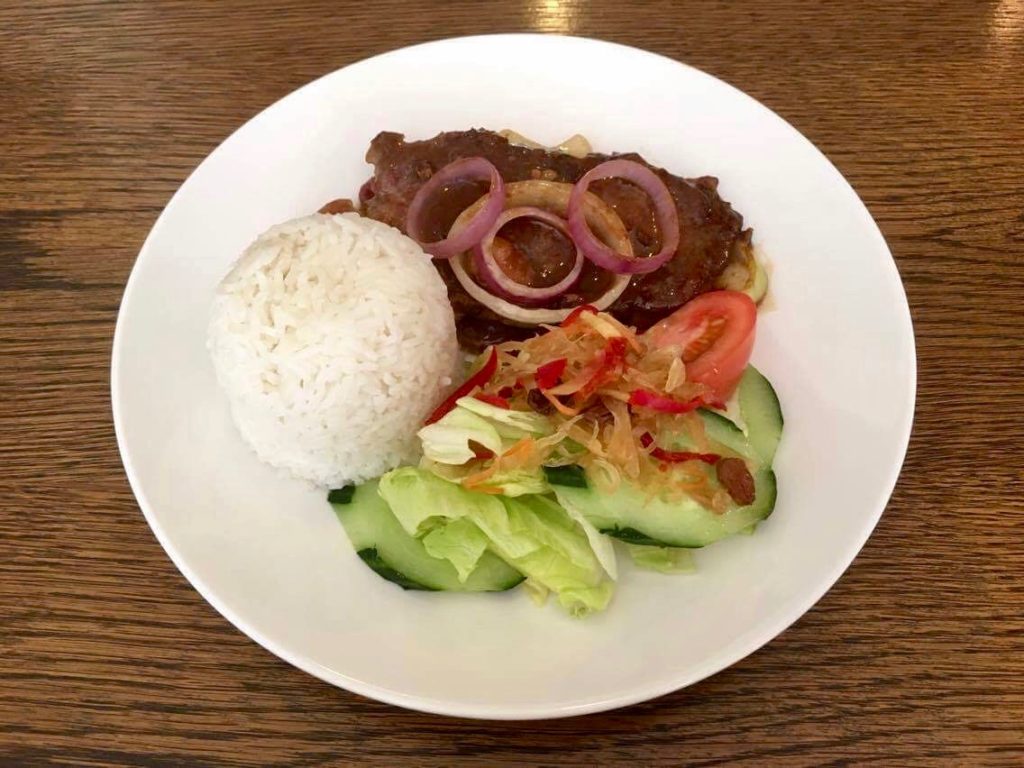
The Beef Steak Tagalog is the Filipino version of the American beef steak. Tender slices or strips of sirloin steak are cooked in lemon juice, soy sauce, and garlic, and garnished with onion rings.

For a taste of Filipino-style pasta, we recommend a plate of Pancit which consists of rice or egg noodles sautéed with pork, chicken, shrimp, and a variety of vegetables. The art of cooking pancit came from China by way of the Filipino-Chinese trade which dates back to the ninth century. This classic Filipino dish is usually served in birthday parties because the noodles represent health and long life.
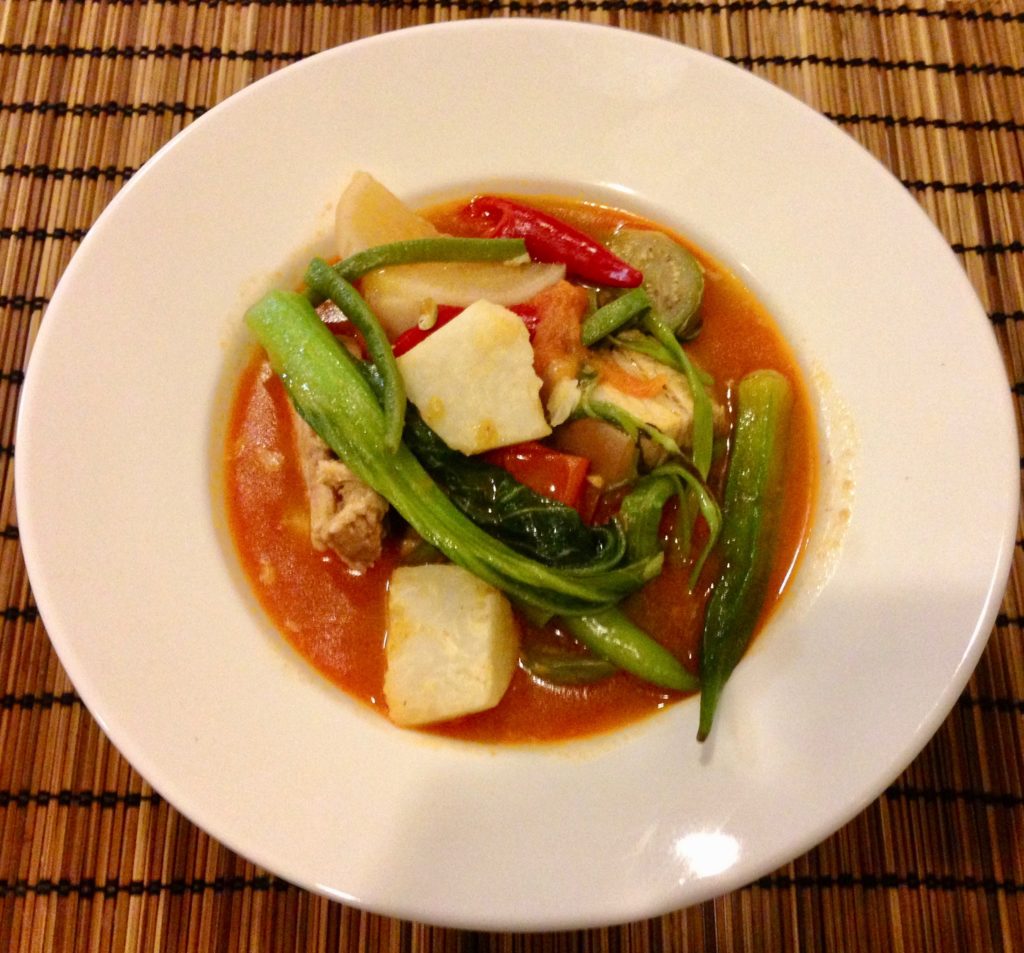
The all-time favorite of Filipinos is the Sinigang, a tamarind-based stew of pork, chicken, or fish mixed with vegetables. It may be a little sour for your taste, but the tamarind gives the dish a different kind of zing. Of all Filipino dishes, Sinigang is perhaps the most special and unforgettable of all because it is a dish often shared and enjoyed with family and friends for any kind of occasion. For Filipinos, the taste of Sinigang evokes memories of home, family, and childhood.
What fellow expats have to say about Filipino cuisine
On June 12, Filipinos all over the world will celebrate the 119th anniversary of their country’s independence. Why not join them in spirit and treat yourself to a taste of Filipino cuisine right here in Brussels.



